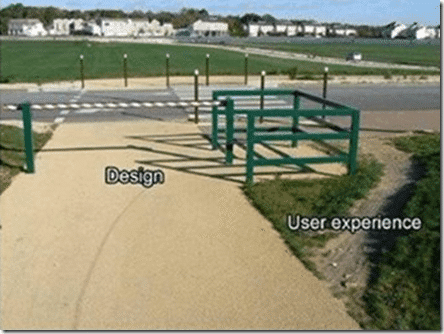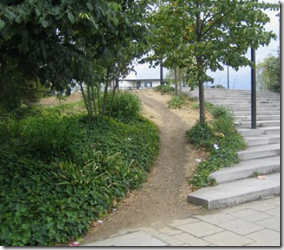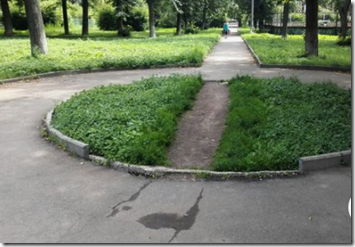Originally posted on November 6, 2019 @ 3:49 PM
What Can Safety Learn From Desire Paths?

A more complex answer may be found in “Risk Homeostasis Theory” (RHT) which says that everybody has their own level of acceptable or ‘target risk’. If they subjectively perceive that risks are lower than their target risk then they will take additional risks (ie shortcuts) in order to reap the benefits and rewards from doing so. If the subjective perceptions of risk are higher than their target risk then they will behave more safely in order to avoid any subsequent losses. Most of these judgements and risk perceptions take place unconsciously.
 I spent many years advising on public liability risk in major shopping centres. One of the things I learned was that it didn’t matter where you put the pedestrian crossing or the footpath or what barriers and fences you place in the way, people will create or take the quickest, shortest path as long as they still perceive the risk as acceptable or the benefits worth any risks they took. (see photo on right of one of my favourites and the attempts to stop people climbing a wall into the Centre). I called them “Unofficial Entry Points” (boring I know) and I gave up on warning signs and other controls and my advice in the end was: “If you can’t beat ‘em, join ‘em” (ie build a path where they want it). But I had to draw the line at kids accessing a shopping centre via the storm water drains from a nearby housing estate. The frustration was that people would negotiate, without incident, all manner of obstacles, walls, fences, garden beds and goat tracks to reach their goal and then slip and fall on a smooth footpath or well maintained terrazzo (another example for RHT).
I spent many years advising on public liability risk in major shopping centres. One of the things I learned was that it didn’t matter where you put the pedestrian crossing or the footpath or what barriers and fences you place in the way, people will create or take the quickest, shortest path as long as they still perceive the risk as acceptable or the benefits worth any risks they took. (see photo on right of one of my favourites and the attempts to stop people climbing a wall into the Centre). I called them “Unofficial Entry Points” (boring I know) and I gave up on warning signs and other controls and my advice in the end was: “If you can’t beat ‘em, join ‘em” (ie build a path where they want it). But I had to draw the line at kids accessing a shopping centre via the storm water drains from a nearby housing estate. The frustration was that people would negotiate, without incident, all manner of obstacles, walls, fences, garden beds and goat tracks to reach their goal and then slip and fall on a smooth footpath or well maintained terrazzo (another example for RHT).
A whole book on the study of “desire paths” was recently released in Holland and was a sell out (see some photos from it below). See details of the book “Olifantenpaadjes” and videos (In Dutch) here. The Dutch call these paths “olifantenpaadje” (elephant paths). The Germans call them “die trampelpfade” (trample path) and the Norwegians call them “festig” (cow path)
– as a small digression you will love this related old poem called “THE CALF PATH”
In 2010, Roy Christopher, in “Desiring Lines: The Path More Traveled” wrote:
Campus sidewalks meander between places of interest, connecting buildings and parking lots in a maze of concrete stripes. Often where their right angles turn near grassy areas between them and another building or parking lot, there are paths leading off diagonally. These forking paths are called “desire lines,” so named because they show where people would rather walk. There’s a story circulating that says good engineers (or lazy ones, depending on who tells the story) put sidewalks in last as to follow the desire lines and avoid wear on the grass. Desire lines illustrate the tension between the native and the built environment and our relationship to them.
So, what can safety learn from “Desire Paths” as an example of how humans really make decisions, despite our efforts to guide and control them?
This desire path cross walk is from the book “How We Drive”





Do you have any thoughts? Please share them below